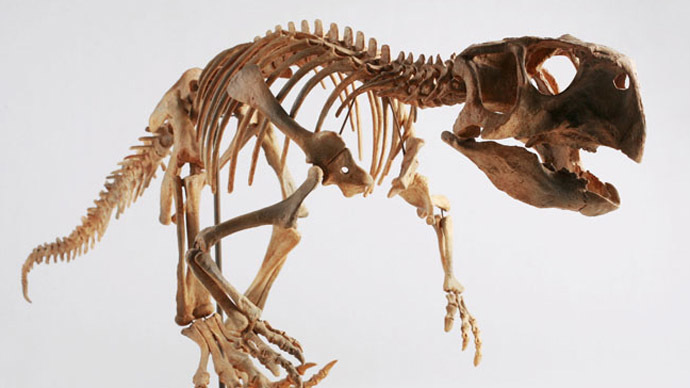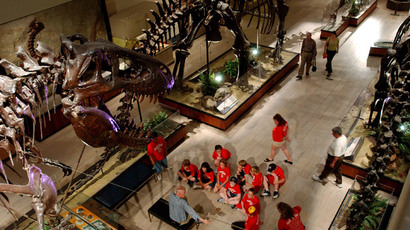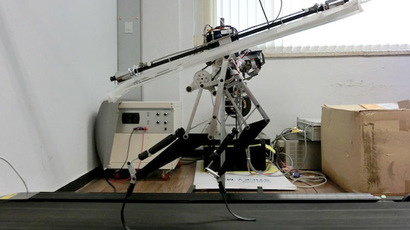Dinosaur skeleton as old as 120mn years discovered in Siberia

A well-preserved dinosaur’s skeleton, presumably between 100 and 120 million years old, has been dug up in Russia’s Kemerovo Region in Western Siberia. Paleontologists believe they have found Psittacosaurus sibiricus.
Discovered at a depth of some 2.5 meters below the surface, the
fossil has been brought to the surface with a huge chunk of soil
as a monolith piece weighting about 500kg. The work to extract
the skeleton may take months.
The finding is a huge success for a group of Russian
paleontologists, who started the expedition in the
extensively-excavated area around the village of Shestakovo on
May 24.
While the area is known for paleontological discoveries, it is
the first time such a well-preserved fossil has been found.
“Dinosaur skeletons can be found quite often in particular
parts of the world - for example in China, or Mongolia. But for
Siberia this is a unique discovery,” Aleksey Lopatin from
the Paleontological Institute of the Russian Academy of Sciences,
told the Vechernyaya Moskva newspaper. “Only a few
Psittacosaurus skeletons have been found before. It is quite
possible that for this place this is not a new species of this
dinosaur. Back in those times Siberia had its own kind of
Psittacosaurus, different than in China or Mongolia.”
Dinosaurs of the Psittacosaurus family lived in Asia about
100-130 million years ago. They were bipedal herbivores about the
size of a gazelle with a powerful ‘beak’ on their upper jaw.
The rare finds will go on display in the regional museum, local
authorities said in a statement.














